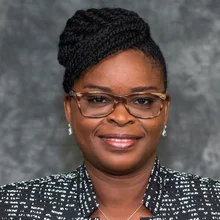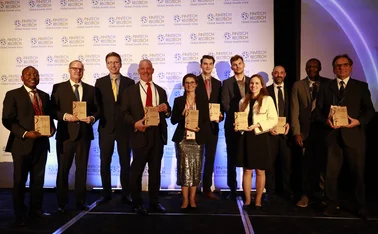
Communications initiative: Eastern Caribbean Central Bank
More than 200 educational videos have played to audiences across eight member islands

Many central banks provide public educational resources for their citizens, but few put the initiative front and centre in their communications strategy the way the Eastern Caribbean Central Bank does. With the goal of improving the financial literacy of some 600,000 people from the Eastern Caribbean Currency Union and getting them to understand the central bank’s work, ECCB governor Timothy Antoine spearheaded a regular communications initiative named ‘ECCB Connects’.
The initiative has been running since 2016, with a small crew in the ECCB’s communication team producing more than 200 education videos. The team produces around three dozen 15–25-minute episodes each year and disseminates them on the central bank’s social platforms and via TV and radio channels across the ECCB’s eight member islands. The topics explored are wide-ranging, spanning from the more traditional central bank themes, including the Eastern Caribbean dollar-US dollar peg, to everyday financial issues, such as investment scams and personal finance.
While the Covid-19 pandemic made face-to-face filming at the central bank’s studio more difficult, the ECCB team turned the challenge into an opportunity: it brought in more voices and perspectives by moving some of the discussions online.
The central bank, headquartered in St Kitts and Nevis, was used to conducting interviews only with its staff and people on the island. But since the pandemic, the ECCB has produced videos involving officials, industry experts and ordinary people from its seven other member-island economies.
“We saw it as a great opportunity to help, to keep people together in a time when there was such uncertainty,” says acting director of corporate relations, Shermalon Kirby.
While the Covid-19 pandemic made face-to-face filming at the central bank’s studio more difficult, the ECCB team turned the challenge into an opportunity: it brought in more voices and perspectives by moving some of the discussions online
Two-way communication
One novel feature of the ECCB’s communications initiative is its emphasis on two-way communication. In some episodes, the ECCB invited ordinary people from member jurisdictions to submit their own video recordings to the central bank, which it then edited and incorporated into the final product. The collection of user-generated content requires no small degree of coordination on the part of the ECCB. Country managers from each of the ECCB’s member islands tap into their local networks and invite suitable parties to send in their own content. They then feed the materials to the headquarters in St Kitts and Nevis for the staff there to produce the final videos. To further engage with the public, the ECCB also occasionally asked people on Facebook to recommend topics for its programme. “What we have found is that our most popular programmes are those related to the currency, because of course it’s money, it’s people’s wealth, it’s what they care about the most,” says Kirby.
Distribution channels and reception
The ECCB has actively used a variety of ways to disseminate its video content, with Facebook and YouTube being two of its main channels. As of January 31, 2023, the ECCB Connects page on Facebook had more than 12,000 followers and more than 10,000 likes, a viewership bigger than even those of some major central banks’ pages. On the other hand, the central bank feeds content to TV and radio stations in the eight member countries, giving the broadcasters the editorial freedom to decide when and how to use the materials. For example, radio broadcasters typically run selected clips from the official content as news during their news programmes. The ECCB is also partnering with the University of the West Indies TV, which runs the central bank’s videos regularly on its 24-hour educational channel. Apart from that, the ECCB also promotes its videos to target groups via email campaigns and WhatsApp groups, and lets banks show the videos in their halls. The use of such diverse communication channels is a testament to the ECCB’s efforts to reach out to the public.

And such efforts have borne fruit, Kirby says. While the central bank does not get solid audience figures from local broadcasters, one way to gauge the success of its communication is by looking at how the broadcasters use their content. “We use the fact they are using the programmes to create new stories,” communications specialist Kirby notes. “We see that as a success because they are seeing it being valuable to their audience, and so they’re using the content now to create their own content rather than just leaving it there or just running it without a commentary.” The specialist adds that some print media also picks up on the ECCB’s content and produces news stories from it.
But public communication is not all positive. There are times when the central bank must deal with controversies. When the ECCB reported a loss of EC$49.1 million ($1.81 million) in the 2021–22 financial year last June – its first financial loss in six years – there was criticism that the central bank had mismanaged its funds. In response, the communication team produced a video in which a central bank official from the investment unit explained how the ECCB makes money, and what contributed to the loss. “We just dealt with it head on,” Kirby says, adding that public education is part of the job and part of the ECCB’s broad mandate to promote the economic development of its member countries.
Meanwhile, the production team has been constantly assessing viewers’ responses and fine-tuning products along the way. For example, the ECCB has now added graphics to summarise the key points at the end of videos, in response to viewers’ suggestions. The central bank has also been trying to make shorter videos, noticing from analytics that people often do not finish watching an entire 25-minute episode. As a result, the ECCB has striven to keep videos within 15 minutes in length and are expected to cut videos down to around 10 minutes in future.
The team also plans to collect more feedback from its audiences by running regular polls. “We have done it, but we haven’t been doing it regularly,” Kirby says. “We intend now to have regular schedule of polling so that we can get feedback from our audience, so we can test where we are, how we are doing.”
The Central Banking Awards 2023 were written by Christopher Jeffery, Daniel Hinge, Dan Hardie, Joasia Popowicz, Ben Margulies, Riley Steward, Jimmy Choi and Blake Evans-Pritchard.
Only users who have a paid subscription or are part of a corporate subscription are able to print or copy content.
To access these options, along with all other subscription benefits, please contact info@centralbanking.com or view our subscription options here: http://subscriptions.centralbanking.com/subscribe
You are currently unable to print this content. Please contact info@centralbanking.com to find out more.
You are currently unable to copy this content. Please contact info@centralbanking.com to find out more.
Copyright Infopro Digital Limited. All rights reserved.
As outlined in our terms and conditions, https://www.infopro-digital.com/terms-and-conditions/subscriptions/ (point 2.4), printing is limited to a single copy.
If you would like to purchase additional rights please email info@centralbanking.com
Copyright Infopro Digital Limited. All rights reserved.
You may share this content using our article tools. As outlined in our terms and conditions, https://www.infopro-digital.com/terms-and-conditions/subscriptions/ (clause 2.4), an Authorised User may only make one copy of the materials for their own personal use. You must also comply with the restrictions in clause 2.5.
If you would like to purchase additional rights please email info@centralbanking.com





